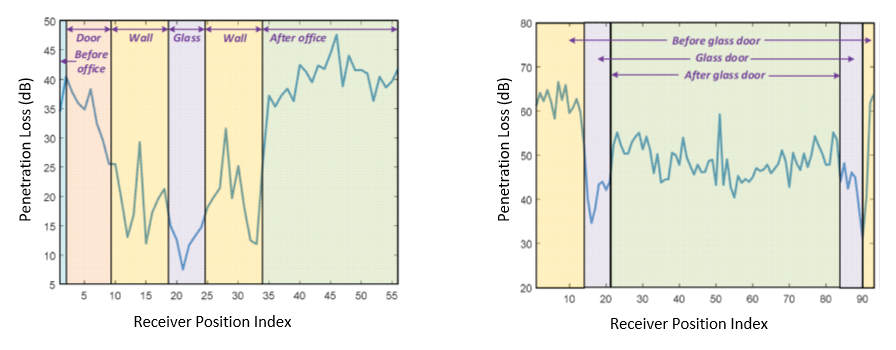Building Penetration Loss
Lacking to date is the characterization of loss at different points of incidence and at different angles of incidence across the surface of building materials, to capture what a real communications system would experience during operation. To fill that void, our work investigated measuring loss using our 60.5 GHz electronically switched double-directional channel sounder. The measurement campaign was conducted in indoor-to-indoor and outdoor-to-indoor environments, comprising over 150 unique transmitter-receiver configurations. The wooden door, plasterboard wall, and interior glass were observed to have penetration losses ranging from 25.5 dB to 40.5 dB, 11.8 dB to 31.6 dB, and 7.5 dB to 18.1 dB, respectively, while the exterior building materials exhibited even larger penetration losses, ranging from 31.1 dB to 66.5 dB.

More details about our building penetration loss study can be found in the reference below:
[1] S. Y. Jun, D. Caudill, J. Chuang, P. B. Papazian, A. Bodi, C. Gentile, J. Senic and N. Golmie, “Penetration Loss at 60 GHz for Indoor-to-Indoor and Outdoor-to-Indoor Mobile Scenarios,” IEEE European Conf. on Antennas and Propagation, July 2020. https://ieeexplore.ieee.org/document/9135581
Contacts
Radio Access and Propagation Metrology Group
-
(301) 975-3685

